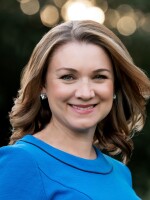NOEL KING, HOST:
COVID-19 has changed the way we regular people work, and that is true for the president, too. In his first 100 days, President Biden's White House has operated like no other before it.
Here's NPR White House correspondent Tamara Keith.
TAMARA KEITH, BYLINE: Gene Sperling has an office in the West Wing. But like a lot of people, he's been working from home.
GENE SPERLING: If it's loud outside, let me know. I can move. If you're hearing something, I can try to move to another room.
KEITH: He's overseeing the $1.9 trillion COVID relief package. This is Sperling's third tour of duty, having served in the Clinton and Obama administrations. He says there's one White House ritual that is very much changed by the pandemic, the morning and afternoon check-in with the chief of staff. In the before times, aides would crowd into the chief's office.
SPERLING: And if you were a little late, you wouldn't get a seat at the table, and you had to stand or find a chair somewhere else. And suddenly, you have that same experience, except now we're all in little boxes.
KEITH: Zoom - there is so much Zoom. And here's a wild thing about the Biden White House. Even people down the hall from each other are still meeting via Zoom. Press secretary Jen Psaki.
JEN PSAKI: We all sit in our offices and do our morning and evening senior staff meetings on video.
KEITH: By now, pretty much everyone working in the White House is vaccinated. But they're all still wearing masks and counting to make sure there aren't too many people gathered in a room.
PSAKI: We have to be models, too. You know, if we are telling the American people, you can't gather, well, then we also can't have a meeting of 30 people in the Roosevelt Room.
KEITH: It's quite different from the Trump White House, when mask-wearing was rare and COVID cases were common. Now there can be an eerie quiet in the hallways. In normal times, you'd never know who you might run into in the West Wing lobby - Cabinet members, CEOs, famous athletes. On this afternoon, when Psaki and I walk in, there's just a couple of Secret Service agents.
PSAKI: This is where people wait to go see the president. And right now it's been - the couches aren't getting a lot of use.
KEITH: Despite almost everything moving virtual, several people said communicating with this White House has been easy and nearly constant. In fact, Nan Whaley, who is mayor of Dayton, Ohio, has a long list of Cabinet members and top White House aides she and other aides have met with remotely.
NAN WHALEY: I mean, I could just go on and on. I think I can name them all because we've actually had a Zoom meeting with them all.
KEITH: Of course, the mayors are also eager to get back to that lobby and meet in person. But Neil Bradley at the U.S. Chamber of Commerce says the Zooms do have their advantages.
NEIL BRADLEY: At physical White House meetings, you have to allot plenty of time for getting into - actually getting into the White House.
KEITH: Not so much with a Zoom. And while there are still plenty of prep conversations, protocols and planning, just like in person, Bradley says there's no drama about who got the best seat at the table.
BRADLEY: You have no control over where you show up in the square.
KEITH: A few weeks ago, Gene Sperling, who at the time wasn't fully vaccinated, joined Biden's first Cabinet meeting to talk about the COVID relief bill.
SPERLING: And yes, there was a decision that I shouldn't be in the room with the president when I had not been completely vaccinated.
KEITH: So they beamed him in from home.
SPERLING: And at first, I thought it was a little odd. But when I saw pictures, I thought, you know, I kind of look like the Wizard of Oz.
KEITH: He looks forward to a return to normal but is still treasuring a recent super busy day with back-to-back meetings where he happened to have a free 15 minutes to help his daughter study for an English exam, something that wouldn't have happened if he'd been in the West Wing.
Tamara Keith, NPR News.
(SOUNDBITE OF MAKAYA MCCRAVEN'S "JHO'S BEAT") Transcript provided by NPR, Copyright NPR.
NPR transcripts are created on a rush deadline by an NPR contractor. This text may not be in its final form and may be updated or revised in the future. Accuracy and availability may vary. The authoritative record of NPR’s programming is the audio record.



